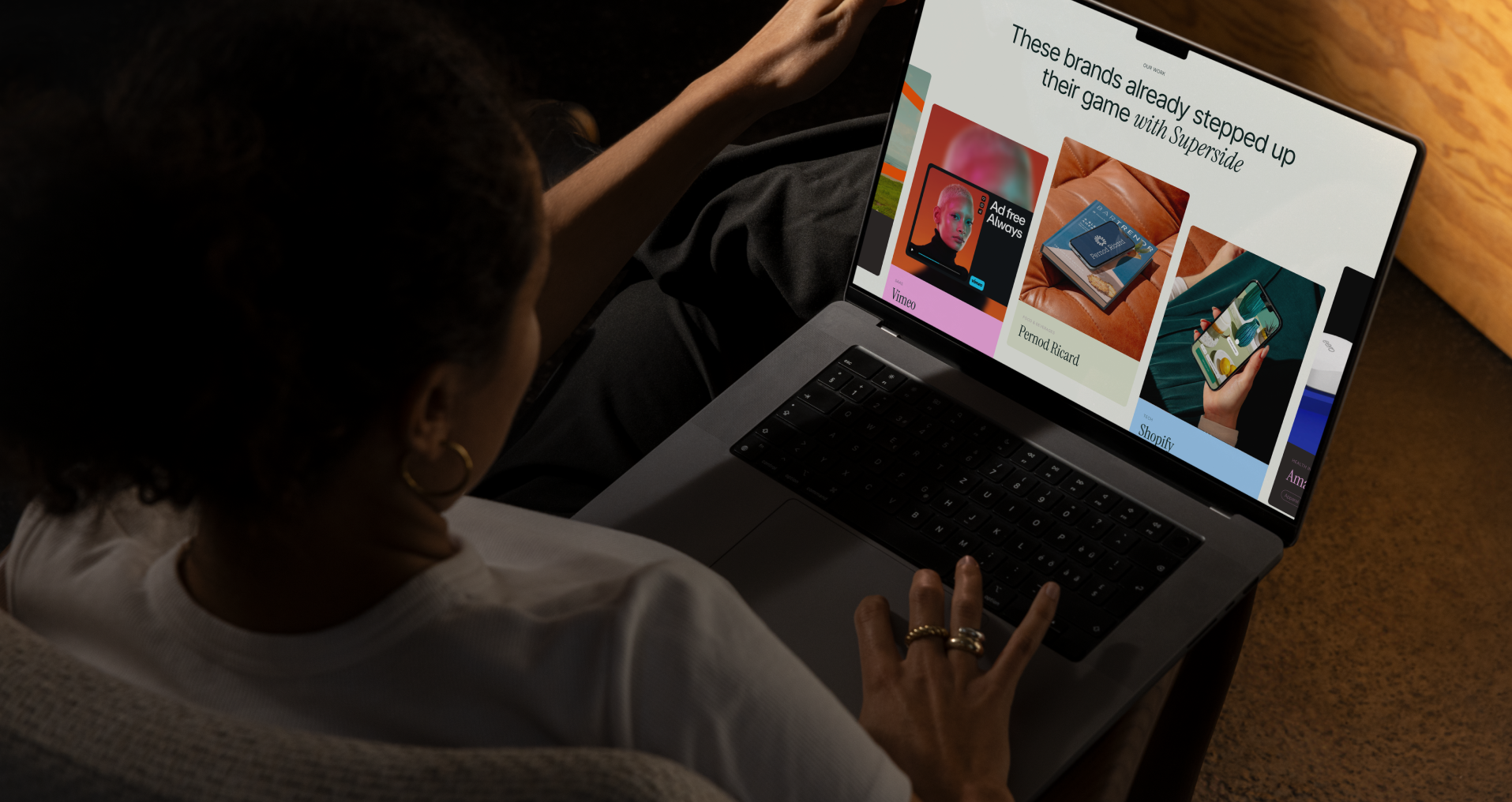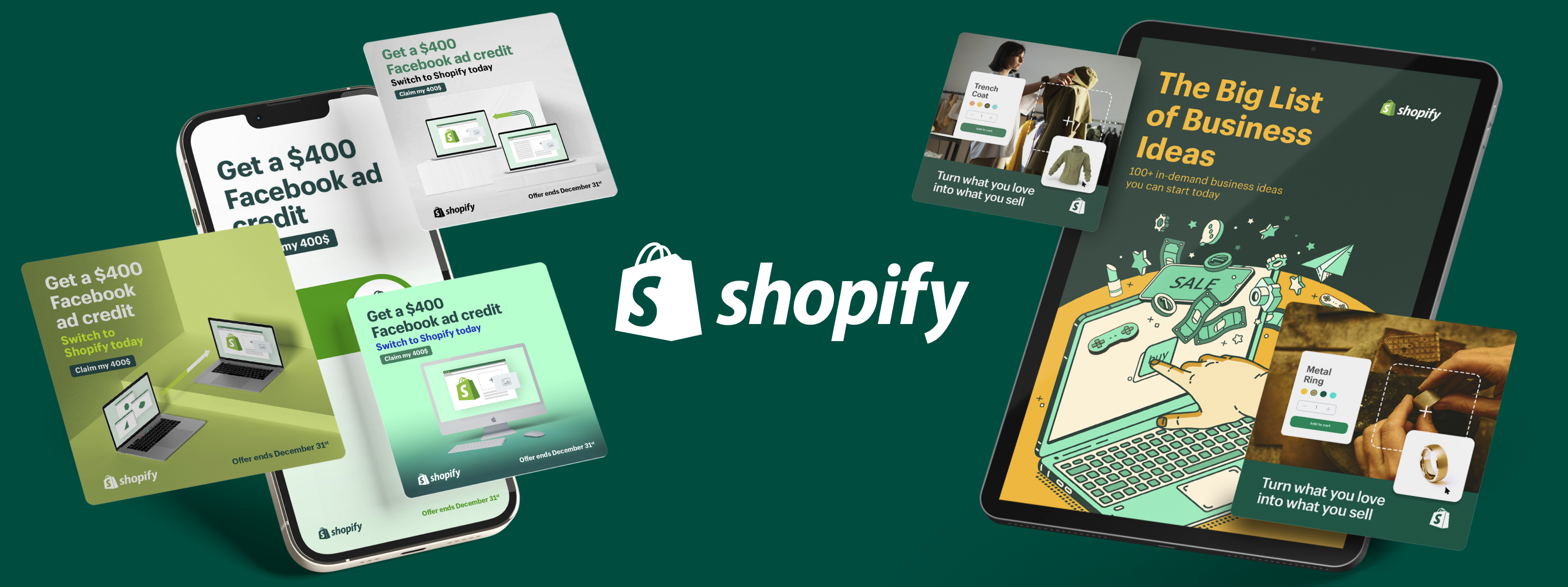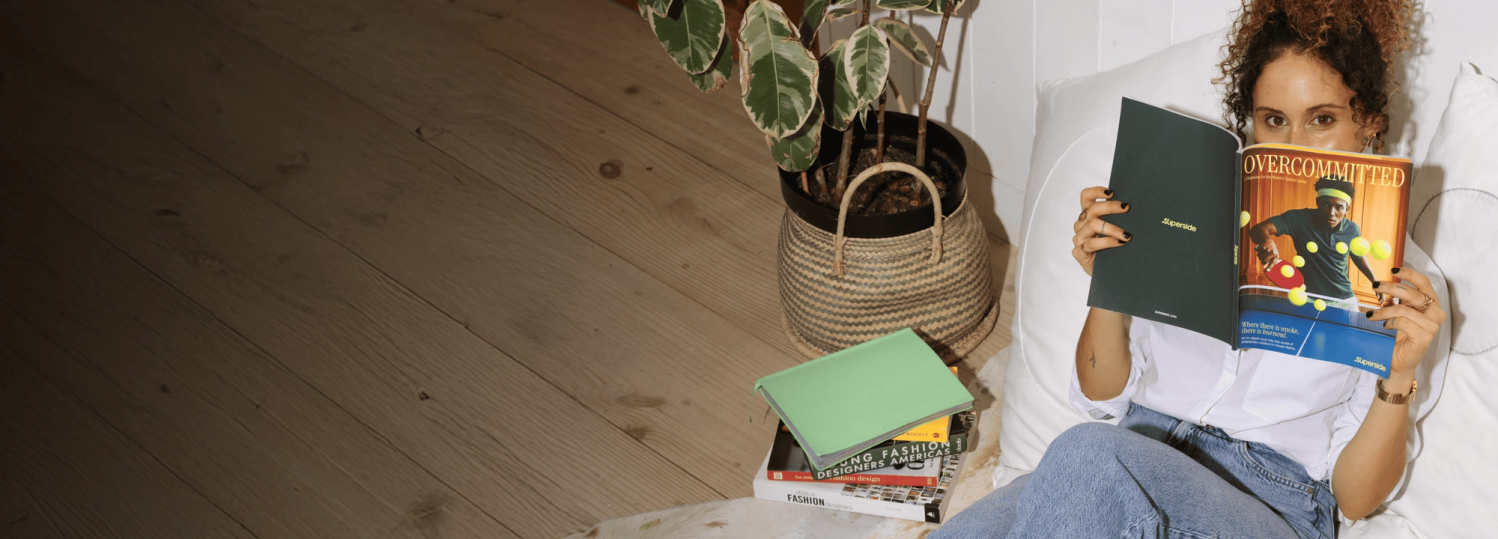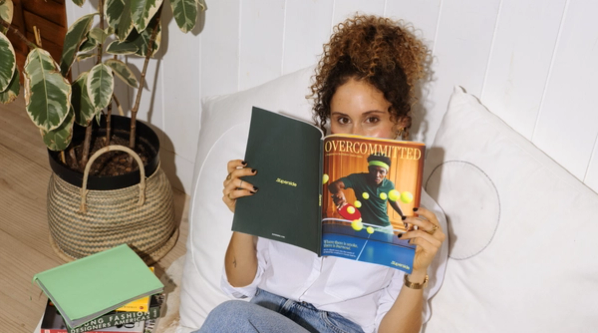Overcommitted, but still strategic
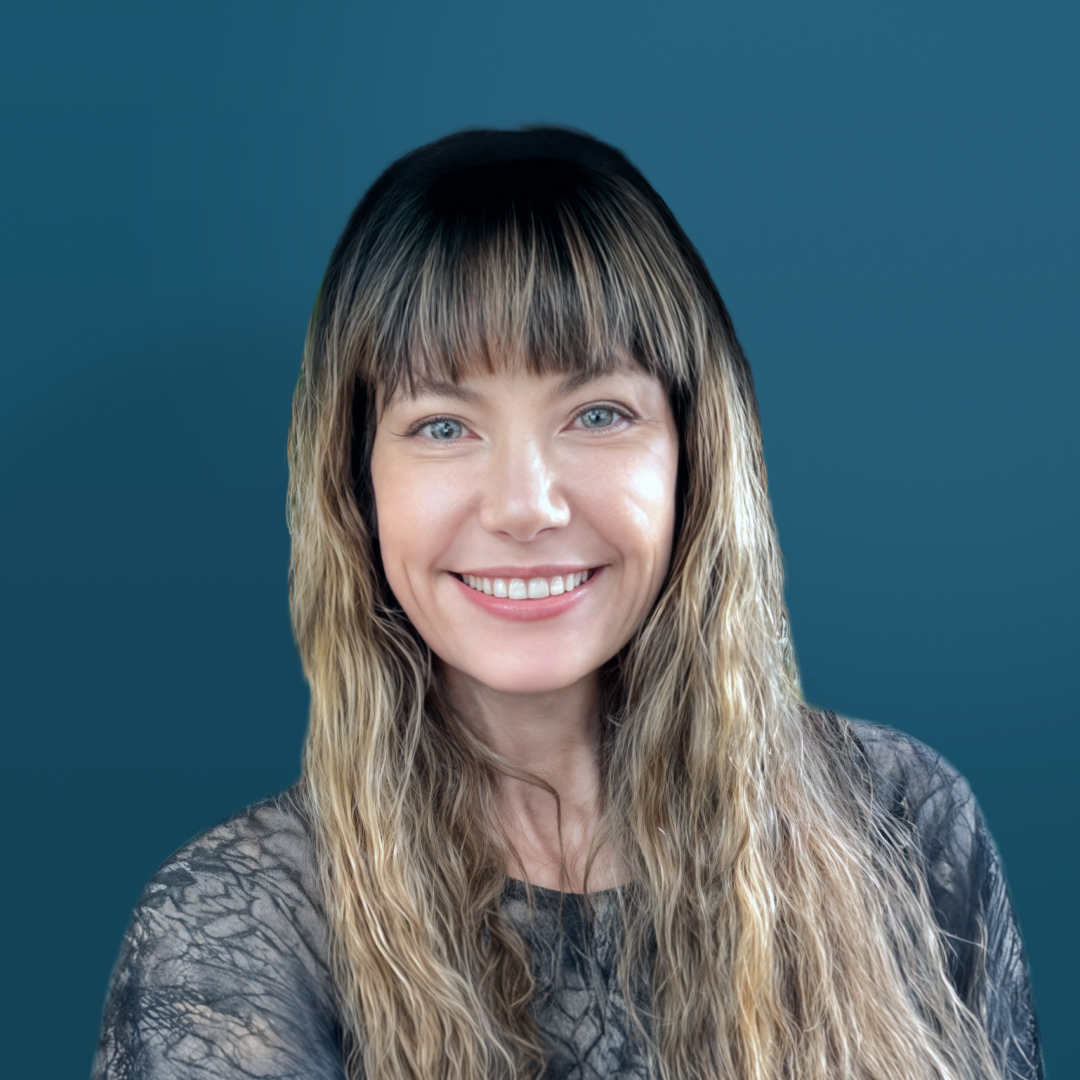

Dear Overstretched Creatives,
This deep dive, reflecting on the results of our Overcommitted Report and my personal experience leading in-house creative teams, is my love letter to you.
Yours in greater calm and creativity,
Jen Rapp
It’s not talent, technology or passion. As a marketing leader overseeing creative teams for the last ten years, the biggest problem in-house creatives face today is bandwidth. Now, more than ever, they’re asked to do more and build more—faster and with fewer resources.
Every creative team I’ve overseen from DoorDash to Klaviyo, even here at Superside, is maxed out—battling burnout as a group and as individuals. No wonder the survey results from our Overcommitted Report came back saying 76% of creative professionals felt burnt out and 78% of their teams felt the same way.
Overcommitted? It’s just another word for in-house teams
In-house creative teams serve many stakeholders. They’re the guardians of the brand and gateway to creative assets for the sales team, marketing teams, event teams, product teams, people teams and more. Anything that requires graphics, video or design, comes to the creative team.
Source: The Overcommitted Report
Popularity comes with a price
Would you like fries with that? The rise of digital media was one of the main reasons in-house teams came to exist. Instead of print, TV and radio campaigns, the number of channels and creative formats has exploded—like Big Bang-level expansion—and it just keeps growing. And the fact that it’s all online, means the people making the requests accidentally underestimate the amount of work involved in creating, editing and versioning creative.
Have you seen our new menu items? The move toward motion, video, AR and immersive experiences takes more time to produce and requires highly specialized skill sets. The battle for attention is getting epically harder and ad lifespans are shrinking to nanoseconds, driving the need for non-stop testing and iteration at the speed of light.
Next? Please pull up to the window… Here’s the catch: No matter how big or small they are or how efficiently they work, in-house teams inevitably end up as a bottleneck—a choke point between their KPIs and the entire company’s creative assets. All the work comes into one team, it’s all urgent—and there’s no way to get it all done.
Can I get a little help here?
Most creative professionals, 70% of them, feel that their team’s best talents are wasted on work that’s well below their skill levels and much less strategic to growth.
The solution: When these teams hit maximum capacity—which is always—they outsource. But, it’s far from a perfect solution—with 85% of teams thinking they need to do a better job choosing what they outsource and who they work with.
The problem: Even the best freelancers and agencies aren’t built for today’s digitally driven, AI-infused landscape. Starting from scratch and determining the best partner for each project is no way to scale. It’s likely why 51% of creative professionals have lost faith in traditional agencies. Honestly, I’m surprised that number isn’t higher!
Source: The Overcommitted Report
There has to be a better way!
The times they are a changing. While traditional service providers struggle to adapt, failing to deliver on speed, quality and communication (or address a plethora of other performance challenges)—partners like Superside, have risen to the occasion.
Before I joined Superside as CMO, I was also a customer. In 2021, my creative team at Klaviyo was seriously swamped. After exploring our options, we hired Superside. Why? What stood out to me was that Superside understood what it meant to step in and act like an extension of our in-house team.
They didn’t try to replace our expertise, they amplified it by serving as an extension of our team. Suddenly, we had a creative team serving our creative team. Our team was able to move faster, get more done and be more creative, without hiring more people or spending our limited budget on a fancy agency.
Ultimately, with Superside by our side, our creative team was no longer the “blocker.” Our internal stakeholders were happier—here’s looking at you Thuan Tran on our Growth Team and Josh Mendelsohn in Product Marketing—and our creatives were happier too.
Enjoy the Overcommitted Report. There’s hope for every overcommitted creative on the planet. We got you!
Superside Chief Marketing Officer, Jen Rapp has 20+ years of experience leading marketing teams and growing brands like Klaviyo, DoorDash, TOMS and Patagonia. She’s also an active rock climber, skydiver, mountaineer, paraglider, skier, Cessna pilot and proud mom. Connect with this full-time CMO and adventurer to talk about scaling design, mountains or both.
You may also like these
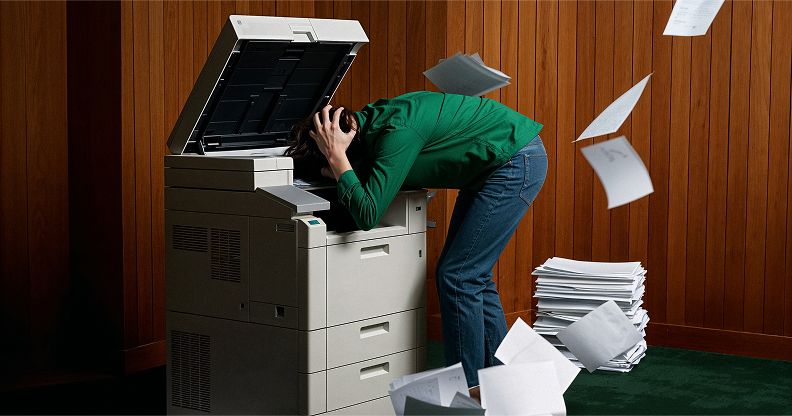
The funny side of creative marketing
Between endless revision cycles, AI panic and marketing trends changing faster than we can say “metaverse,” burnout is real. But here’s the good news: there’s one thing that can help teams push through the chaos and creative clutter—humor.At Superside’s recent Overcommitted Virtual Summit, cartoonist and marketing legend Tom Fishburne reminded us that laughter isn’t just a coping mechanism—it’s a creative superpower. In this recap, we’ll break down the biggest insights from the session. (Plus a few marketing mishaps you definitely don’t want to repeat).The case for creative comedyHumor is everywhere and it only takes opening our eyes to find it in our day-to-day lives. Fishburne kicked things off with a story about his dishwasher breaking down. The screen flashed “FU” over and over again—turns out, that stood for “failed unit.” While hilarious in hindsight, it was also a perfect metaphor for how brands often get in their own way.Marketing and creative teams work tirelessly on campaigns, yet somehow, the final product can feel like a robotic, soulless mess. Why? Teams are too busy and we take ourselves too seriously.
The new era of creative leadership
Sometimes, it can feel like burnout is the only constant for creatives. We’ve heard it from creative teams over and over again, from small brands to global powerhouses. There is a seemingly never-ending list of assets that need to be built and campaign deadline after campaign deadline.Not only that, but almost every project is critical. When we spoke to 200+ creative leaders about the issues affecting their teams for Overcommitted: The State of In-house Creative Teams in 2025 report, they shared that 55% of their projects were marked “high priority”.When everything is important, how do you manage business demands while helping your team maintain their creative integrity (and not burnout)?We went to one of the experts to find out. James Hurst, former creative director at Tinder, joined us for our Overcommitted Virtual Summit to share his experience in prioritizing what matters, culture-building, risk-taking and his thoughts on the role of artificial intelligence (AI) in creativity.1. Stop creative burnout
Wonder & rigor: Creative frameworks for burnout
We’ve all been there—staring at looming deadlines, feeling uninspired and wondering where the energy for big ideas went. Creativity isn’t just about generating fresh ideas—it’s about keeping the spark alive in a fast-moving world.If you’re feeling stuck in the grind—caught in back-to-back meetings, swamped with admin work or just lacking time for meaningful creative thinking—you’re not alone.What if we could work differently instead of just working harder?At the Overcommitted Virtual Summit, Dr. Natalie Nixon introduced the WonderRigor™ Framework, a refreshing approach to balancing imagination and execution. It’s not about piling on more work—it’s about bringing back the energy, excitement and curiosity that make work fulfilling.If you’re ready to shake up your routine, rediscover creative flow and bring more meaning to your work, this creative framework can help.
